ROMANIA
Economy

Economy

Cities in ROMANIA
| Brasov | Bucharest |
Economy
General
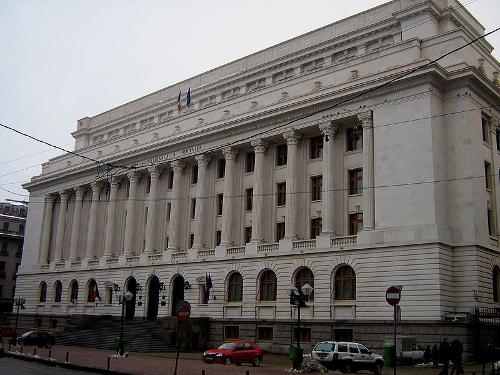 National Bank of RomaniaPhoto: Gabriel CC 2.0 Generic no changes made
National Bank of RomaniaPhoto: Gabriel CC 2.0 Generic no changes made
Until the end of the Second World War, Romania was an agricultural nation where large land ownership predominated. After 1945, radical land reforms were implemented and large land ownership came to an end.
Until the revolution, Romania had a strongly centrally planned economy. Until then, the means of production were usually in the hands of the state or collectively owned. In the 1950s small farms, heavy industry and banks were also nationalized. This situation lasted until the upheaval when a process of privatization was set in motion. In the mid-1990s, the agricultural sector was most advanced with privatization.
From 1998 to 2000, Romania's economy went through a period of great recession. From 2001, the economy was on the rise again with a growth rate of 5.3%. Romania joined the European Union in 2007 and has since received EU and IMF support to improve its economy. Gross national product per capita in 2017 is: $ 24,600. Gross national product divided by sectors (2017):
Agriculture 4.2%
Industry 33.2%
Trade and services 62.6%
The unemployment rate has been around 5% for several years now. Inflation in Romania is historically low compared to other countries in this region. An average inflation rate of 1.3% was measured in 2017 (45.6% in 2000).
The purchasing power of the Romanian population will increase in the coming years due to economic growth and the government increasing the incomes of the poorest population groups. Yet at the moment 20% of Romanians are still living below the poverty line.
Environmental issues weigh heavily on Romania and environmental protection is not yet very high on the agenda of the Romanian government. The EU and the World Bank estimate that around € 50 billion will be needed by 2020 to combat environmental pollution.
Waste storage, nature conservation and ozone depletion measures have the highest priority. Zones that are most endangered from an ecological point of view are the areas with a lot of metal industry (Baia Mare, Zlatna, Ramnicu Valcea and Ploiesti) and where paper and cellulose are produced (Braila, Savinesti).
In urban areas, air pollution is significant because many households still burn coal and the outdated fleet, which often still runs on diesel with a high lead content. A report by the Romanian Ministry of Water and Environmental Protection describes one third of the 41 regions in Romania as “atmospheric critical”, where the air contains high levels of heavy metals such as copper and iron.
The processing of household waste is also a major problem here.
Water pollution mainly occurs along the border river between Romania and Moldova, the Prut. Soil pollution is caused by mining and heavy industry. Finally, intensive agriculture leads to over-exploitation of the vulnerable soil, which is often severely dried out.
Agriculture, livestock, fishing and forestry
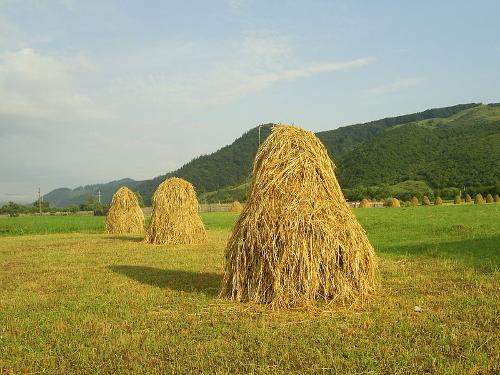 Agriculture RomaniaPhoto: Diego_Cue CC 3.0 Unported no changes made
Agriculture RomaniaPhoto: Diego_Cue CC 3.0 Unported no changes made
Romania is still strongly agrarian, despite Ceausescu's efforts at the time to turn his country into an industrial society. The agricultural sector employs approximately 28.3% (2017) of the labor force, making Romania still one of the most agricultural countries in Europe. Of the available agricultural land, 60% is used as arable land, 25% as pasture land, 4% as vineyards, 6% as hay land and 1.8% as orchards. The revenues have been lagging behind expectations for many years.
The arable areas are: Dobrogea, the Banaat, the Pre-Carpathians, Zevenburgen, Klein Wallachia and Maramures. The main products are: grain, potatoes, legumes, sugar beets, maize, flax, fruit (including plums for the well-known plum gin or “tuica”), rice and wine.
Sunflower production shows constant growth due to the high demand for sunflower oil from abroad. At the moment there are about 500 production companies and that number is still growing. Sunflower seeds, soybeans, linseed and castor oil are processed in the oils and fats sector. The oil processing industry produces more than 400,000 tons a year of processed oils and 48,000 tons a year of margarine.
Livestock farming has undergone radical changes over the past thirty years. The traditionally itinerant shepherds in the Carpathians were forced to settle.
After 1989, the number of cattle in Romania decreased sharply due to the closure of large cooperative farms. As a result, more and more beef is imported from abroad. Much attention has also been paid to pig breeding.
Fishing takes place on rivers, lakes, ponds and artificial lakes near hydroelectric power stations and fishing in the Black Sea has also played an increasingly important role in recent years.
About 28% of the surface is covered with forest. In particular, the southern and eastern Northern Carpathians are very wooded. Forest exploitation is an important source of income in these areas.
Mining and energy supply
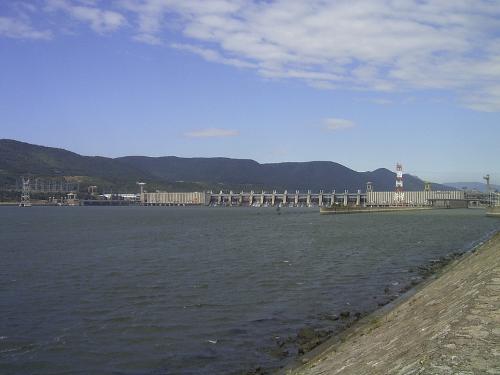 Hydro power plant RomaniaPhoto: Denis Barthei CC 3.0 Unported no changes made
Hydro power plant RomaniaPhoto: Denis Barthei CC 3.0 Unported no changes made
The main mining product is petroleum. There are large oil fields in Prahova, Bacau, Gorj Crisgana and in Cuges. In the 1980s, large quantities of petroleum were exported abroad to repay the high external debt, but production has been declining in recent years.
Natural gas is extracted in the Pre-Carpathians and in the highlands of Zevenburgen. However, these stocks are nowhere near enough to meet domestic needs.
This also applies to coal, iron, lead, copper and manganese ores. There are also brown coal and bauxite. In recent years, many coal and lignite mines, especially in the Jiu Valley, have been closed.
Romania has quite large reserves of oil and gas, but the days when Romania was one of the most important oil producers and exporters in the world are long gone. The oil and natural gas sector is currently very outdated. In order to be able to implement the necessary modernizations, we have to wait for foreign investors and the privatization of state energy companies.
Electricity is supplied by means of combined heat and power plants (petroleum and coal). In collaboration with Yugoslavia, a hydroelectric power station has been built in the Danube at the Iron Gate.
A power plant has been built at Turnu Magurele in collaboration with Bulgaria. A hydroelectric power plant is being built in Cernavada and already has a nuclear power plant on its territory. Own production covers three quarters of domestic demand.
Industry
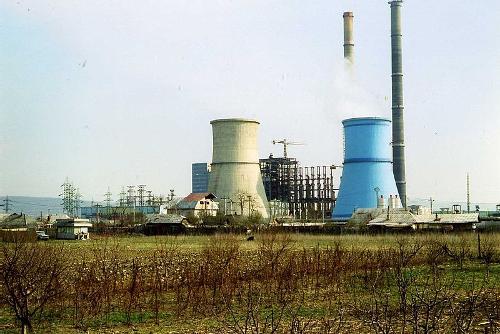 Bacau Industrial area, RomaniaPhoto: Felix O CC 2.0 Generic no changes made
Bacau Industrial area, RomaniaPhoto: Felix O CC 2.0 Generic no changes made
After the Second World War, industrialization was tackled on a large scale, with an emphasis on the development of the heavy (especially the chemical) industry. Since 1989, more attention has been paid to the consumer goods industry.
Industrial concentrations can be found in: Bucharest and surroundings, Bacau, Galati and Iasi in the east, Brasov, Arad, Timisoara and Oradea.
The textile sector consists mainly of small and medium-sized companies. Dutch companies often outsource the production process to these Romanian companies because of the low wage costs. The machinery is quite modern and the employees in this sector are often well trained. The textile sector also makes a very important contribution to Romanian exports, approximately 26% of the total exports are realized by this sector.
Just like the textile industry, the metal industry, including the arms industry, also occupies an important place in the Romanian economy, as it generates approximately 15% of industrial production.
The metal industry in Romania is very labor-intensive, but due to the low wage costs and the well-qualified employees, outsourcing production activities for foreign companies is also very interesting here. In Romania, for example, there are still plenty of welders available, professionals who are almost impossible to find in the EU.
Trade and service sector
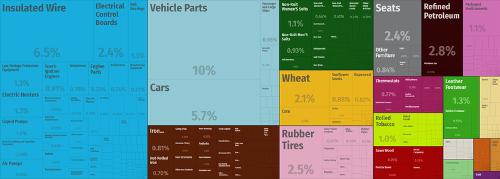 Export RomaniaPhoto: R. Haussmann, Cesar Hidalgo, et.al CC 3.0 no changes made
Export RomaniaPhoto: R. Haussmann, Cesar Hidalgo, et.al CC 3.0 no changes made
The European Union accounts for about two thirds of total trade with Romania, making it the most important trading partner. Exported are: chemical and petroleum products, machines, fertilizers, raw materials for the food industry and textiles. The main customers are currently Germany, Italy, France, Turkey and Hungary.
Imports are: raw materials, machines, means of transport and consumer goods. The main suppliers are currently Germany, Italy, Hungary, France, Russia and Poland.
The total value of exports in 2017 was $ 65 billion and the total value of imports was $ 78 billion. Romania therefore has a trade deficit.
Favorable prospects can be found in the financial services, insurance and accountancy industries, legal services, and the marketing and advertising industries.
Many foreign banks have now established themselves in Romania. The National Bank, which has existed since 1880, functions as the central bank. The bank network currently consists of 17 Romanian banks and 24 banks that are wholly or partly foreign-owned. Since 1995, Romania has had a stock exchange again.
Traffic and transport equipment industry
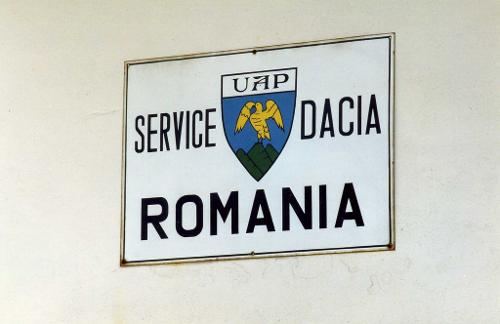 Dacia RomaniaPhoto: Sludge G (CC BY-SA 2.0) no changes made
Dacia RomaniaPhoto: Sludge G (CC BY-SA 2.0) no changes made
Romania's road network of approximately 75,000 kilometers is generally in poor condition and there are less than 1,000 kilometers of motorway. The aim is to increase the number of kilometers of motorway and widen national roads through a multi-year plan. Bucharest will then be a crossroads of several highways at home and abroad. This is supported by the European Union, EIB, EBRD and the World Bank.
Since the 1970s, Romania has had its own automotive industry supplying passenger cars, trucks and buses. This industry collapsed after the revolution due to lagging investments, which meant that the techniques used quickly became obsolete. The national brand is Dacia. Imports of foreign models are on the rise. Many second-hand cars are also being imported. Dacia has been part of the French Renault group since 1999.
Due to the poorly developed road network, the railways are still of great importance for both passenger and business transport. The rail network covers 11,275 km, much of which is electrified. Here too, people are working hard on modernizing the current infrastructure, again with the help of the above-mentioned international organizations. A lot of money is also being earmarked for the modernization of stations, digitization of communication networks, equipment for future maintenance and repair and work on the tram and metro facilities in Bucharest. Due to its geographic position, Romania is a crossroads of international railways connecting different parts of Europe.
At 1000 kilometers, the Danube is the most important waterway on which a large part of the goods transport between Eastern and Central Europe takes place. Important is the 64-kilometer Danube-Black Sea Canal, which allows seagoing vessels to cut off about 380 kilometers from the Danube.
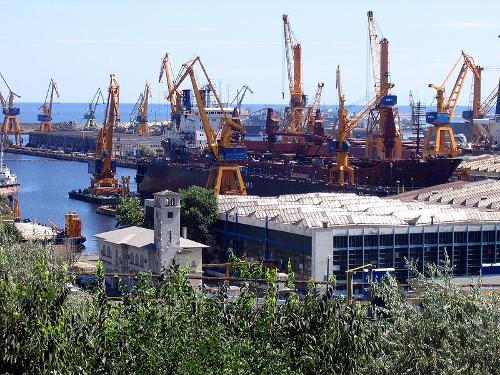 Shipyard in Constanta, RomaniaPhoto: Acaro CC 2.5 Generic no changes made
Shipyard in Constanta, RomaniaPhoto: Acaro CC 2.5 Generic no changes made
The Black Sea has the same function with the important port of Constanta. Approx. 60% of foreign trade crosses the border through this port. Constanta has the potential to become the main port on the Black Sea. To this end, large-scale modernization projects are being carried out with the help of Japan, among other things. The off-shore dam will be extended, the number of harbor basins will be increased and a second container terminal will be built. Other important ports are Mangalia, Sulina, Giurgiu, Galati, Braila and Tulcea.
The shipbuilding industry is important to the economy. The production of hulls is particularly important. These hulls are finished into complete ships abroad. The yards are increasingly in the hands of foreign investors.
The main international airports are Bucharest (Otopeni and Baneasa), Timisoara and Constanta. There are also dozens of other airports.
Sources
Bos, J.W. / Roemenië : mensen, politiek, economie, cultuur, milieu
Koninklijk Instituut voor de Tropen
Democratisering aan de Donau : Roemenië na de revolutie van 1989
Instituut voor Publiek en Politiek
Roemenië
Steunpunt Oost-Europa Projecten
Versteegen, J. / Roemenië
Gottmer
Williams, N. / Romania & Moldova
Lonely Planet
CIA - World Factbook
BBC - Country Profiles
Copyright: Team The World of Info